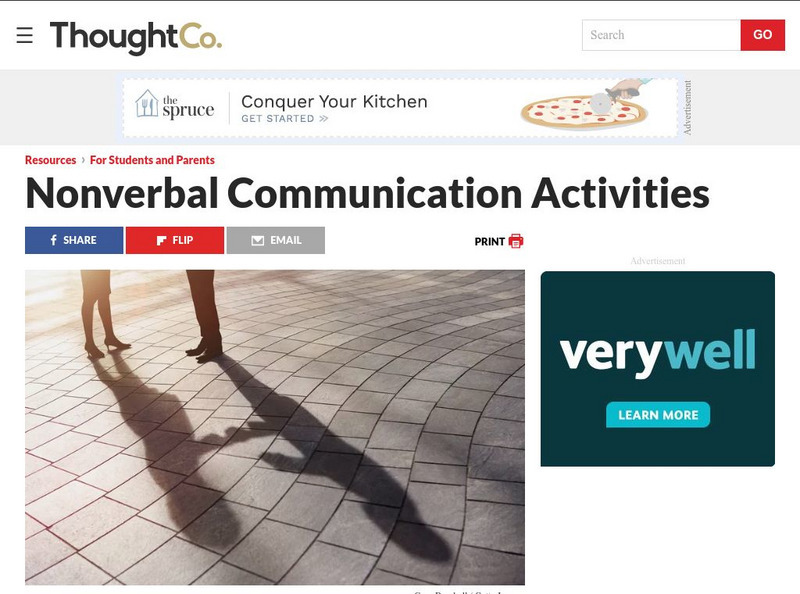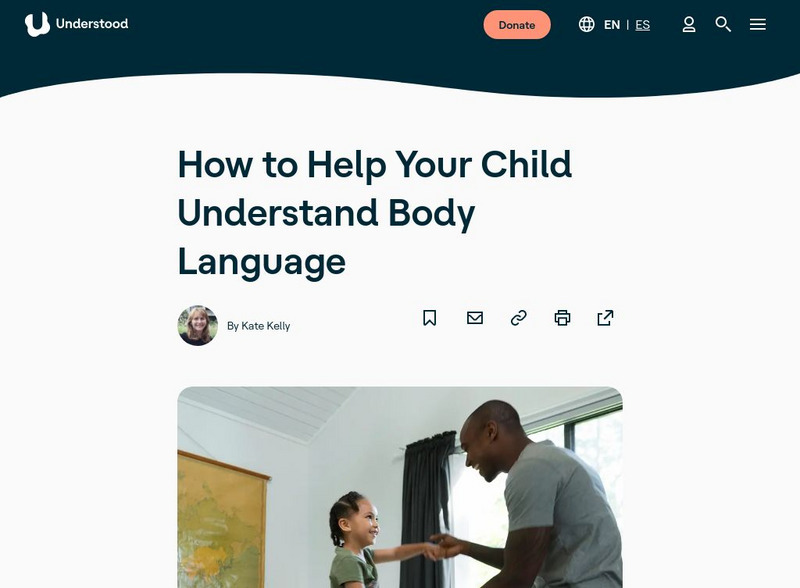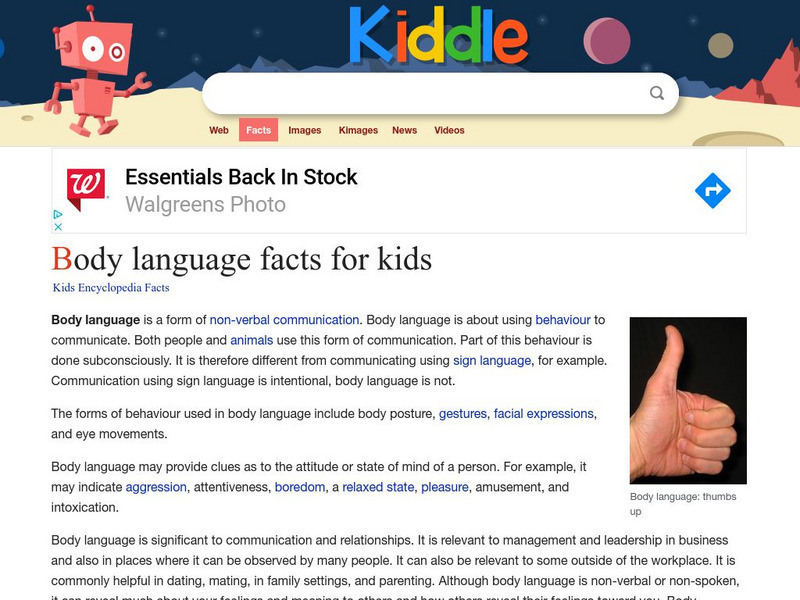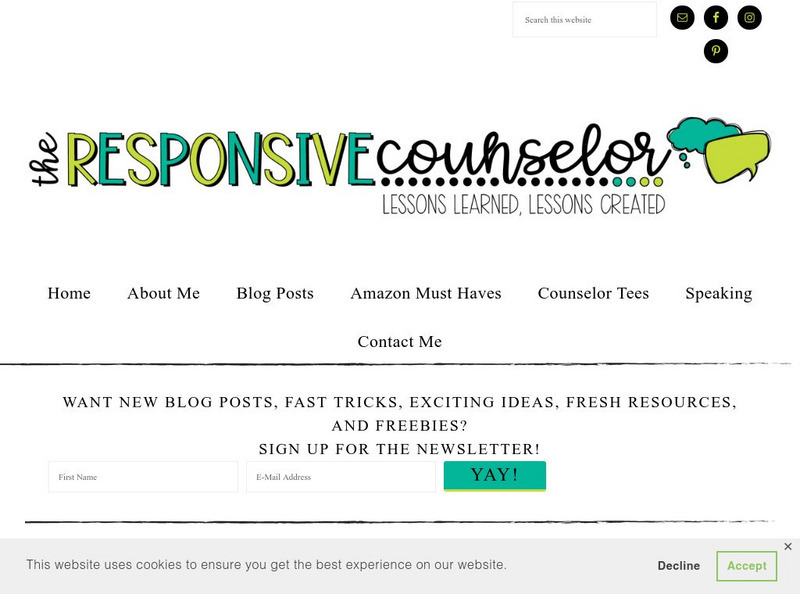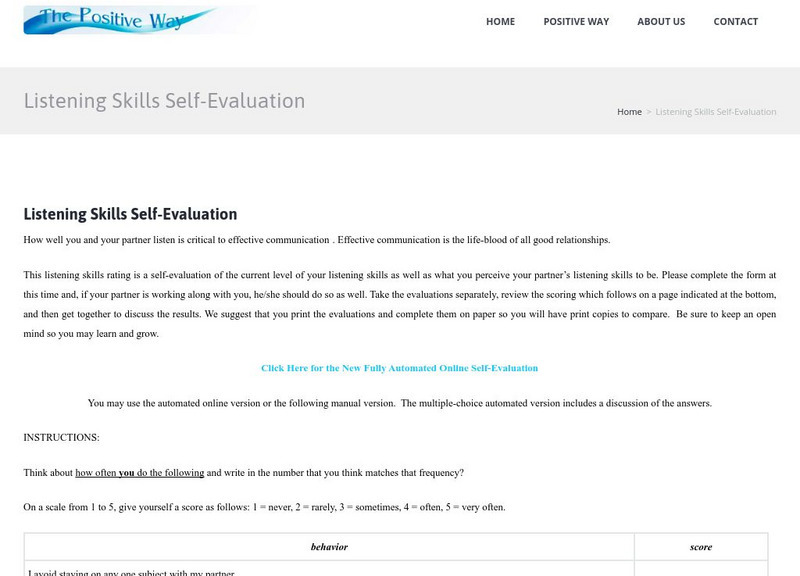ThoughtCo
Thought Co.: Nonverbal Communication Activities
It's important to be aware of nonverbal communication, so we can avoid sending and receiving unintentional messages through our expressions and body movements. These exercises are designed to help you understand how much information we...
Alabama Learning Exchange
Alex: Franklin D. Roosevelt's Pearl Harbor Address
The viewing goals for this lesson were for students to use a visual text, Franklin D. Roosevelt's "Day of Infamy" speech (played first without sound), to identify visual cues & understand why he may have chosen to use certain...
Other
Takelessons: Body Language in Different Cultures
This interactive resource allows students to understand important differences in different types of body language across cultures.
Other
Take Lessons: How to Read Body Language: Examples From Around the World
This resource provides several examples of different meanings of various types of body language.
Understood For All
Understood: How to Help Your Child Understand Body Language
This article provides tips on how teach children to pick up on social cues.
Other
Kiddle Encyclopedia: Body Language Facts for Kids
This resource provide a list of common types of body language. Each type of body language is described.
Other
The Responsive Counselor: Body Language and Tone of Voice Lesson Plan
This blog post from shares several activities that will help students understand how to interpret voice tone and body language.
Other
Centervention: Personal Space Worksheets for Students in Elementary School
This lesson plan will help young children understand the concept of "personal space" and will be reinforced via reproducible worksheets.
Other
How to Gesture Effectively
Six rules that apply to anyone seeking to become a dynamic and effective speaker.
Other
Ward Green and Hill Associates: Body Language: Making a Good First Impression
Slideshow that explains how body language affects and influences others. Gives you information on how to make a good first impression.
Other
Wghill.com: Body Language and Non Verbal Communications
This site contains links about body language and non verbal communication skills. The links are about making good body language and non verbal communication skills such as eye contact and smiling.
TES Global
Blendspace: Nonverbal Communication
In this TES Blendspace, students will have access to nine resources that will help them learn about nonverbal communication.
Other
Bradley C Vs: Interview Body Language: Techniques
The site outlines how to control your body during an interview.
Other
Six Minutes: Speech Analysis #3: Modified Sandwich Technique for Evaluations
A resource featuring a systematic approach to presenting a speech evaluation including various modifications. SL.9-10.3 Eval Presentation. CCSS.ELA-Literacy.CCRA.SL.3, SL.9-10.3 Eval Presentation
Other
Listening Skills Self Evaluation
Listening is a skill that is often overlooked and it can have everything to do with how someone views you. This site provides an evaluation that allows the user to analyze their ability to listen in a thoughtfull manner. The evaluation...
Other
Speak for Success! Persuade! How to Use Body Language in a Persuasive Speech
This site explains how to use body language in a persuasvie speech. Distinctions are made in the realm of body language as it applies to speaking while standing, sitting, or communicating virtually. SL.9-10.3 Eval Presentation


